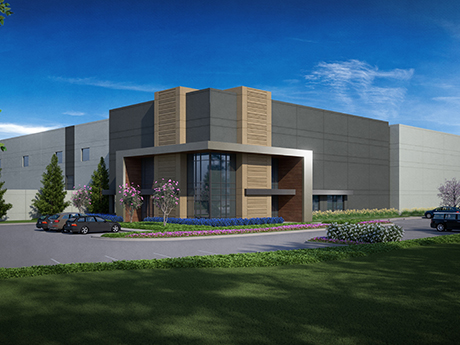By Chase Clancy, vice president, Colliers
The Austin industrial market is booming. According to Colliers’ research, Austin’s industrial market continues to grow at an amazing clip, spurred by rapid population growth, major manufacturing relocations and new e-commerce and inventory trends.
Despite the longstanding shadows that larger markets like Houston and Dallas have cast on Austin’s growth, the market is reaching a fever pitch of rising rents, tightening vacancy, significant new deliveries and equally noteworthy preleasing activity.

Chase Clancy, Colliers
Based on Austin’s population size, Colliers’ research suggests that the market has the runway — both in terms of supply and demand — to nearly double in size over the next five years. With demand for space showing no sign of cooling at the local level, we project a prolonged period of record development and record absorption.
To put that into context, Austin’s industrial market currently spans roughly 57 million square feet. We are tracking more than 40 million square feet of product in our development pipeline — more than 10.2 million square feet of which is currently under construction — with more on the horizon.
Trailing 12-month absorption stands at approximately 3.4 million square feet as of the second quarter of 2022, but this is limited by trailing 12-month deliveries, which are far smaller than what is expected in the coming 12 months.
Industrial as an Anchor
Throughout the height of the pandemic and the return to “normalcy” thereafter, the industrial sector largely buoyed the commercial real estate market in Austin, and the pace of growth has not slowed even as offices started coming back on line.
As employees gained the freedom to work and live where they wanted, the allure of Austin’s culture, work-life balance and strong technology industry attracted thousands of new residents — a trend that continues to strengthen the area’s underlying industrial fundamentals.
At the same time, Austin’s manufacturing industry received its own “shot in the arm” with Tesla’s decision to build its newest manufacturing facility on the city’s east side, followed by Samsung’s announcement of a new $17 billion chip manufacturing facility now under construction in the northeastern suburb of Taylor.
These operations — and rumors of other large manufacturing projects in the works — continue to drive leasing activity from the cadre of third-party suppliers, logistics companies and more that will support them. This activity will significantly increase industrial demand in and around Austin.
In addition to the growing number of tenants in the market, the sizes of their requirements are also expanding. Whereas in years past, the Austin market would see only a handful of tenant requirements greater than 100,000 square feet, we now see competition among tenants for 200,000, 300,000 and even 400,000-square-foot buildings, and developers have taken notice.
A case in point is the GTX Logistics Park in Georgetown, Texas, where Green Point Property Co. is currently under construction on the first phase of development, a 409,822-square-foot cross-dock building. The park’s big box design is a direct response to the changing tenant demand in the Austin MSA and is well-positioned to meet the needs of the largest distribution and manufacturing operations currently looking for space in Central Texas.
Future Growth Prospects
With more and more corporate relocations and expansions targeting Austin every year, the area remains one of the fastest-growing regions in the
country.
Housing affordability has rapidly declined in the face of so much demand and out-of-state purchasing power, which has driven homebuilding further from Austin’s urban core. In addition to the growth of Travis County, the neighboring cities in Hays County to the south and Williamson County to the north continue to jockey for position on the list of Top 10 fastest-growing cities in the country for their respective sizes.
Notably, Austin’s population continues to creep southward into the I-35 corridor, which is met by San Antonio’s growth northward. Future growth in the area will see these two large metropolitan areas continue to thread together, much in the style of the Dallas-Fort Worth metroplex.
The pace of industrial development has been mind-boggling. Robust tenant demand and significantly larger average tenant requirements have kicked off a flurry of speculative development activity that seems to grow every week.
If developers deliver all the projects planned and under construction on schedule, we expect nearly 23 million square feet of new industrial product — roughly 40 percent of our current inventory — to be added by the end of 2023. This appetite among speculative industrial developers in Austin is unprecedented, especially considering Austin’s historical absorption of such product is below 4 million square feet annually.
Summary
Austin’s industrial market continues to grow at an amazing clip. Over the past few years, Austin has seen an average of 184 people moving to the area every day. This number actually increased during the pandemic as employees earned more flexibility in where they live and work. Now, however, that figure may be starting to slow.
At the same time, recent major manufacturing announcements have driven an explosion in third-party supplier and logistics requirements in the area. This new demand, coupled with the area’s population growth, e-commerce trends and modified inventory strategies, continues to drive the need for distribution space throughout Central Texas. ν


